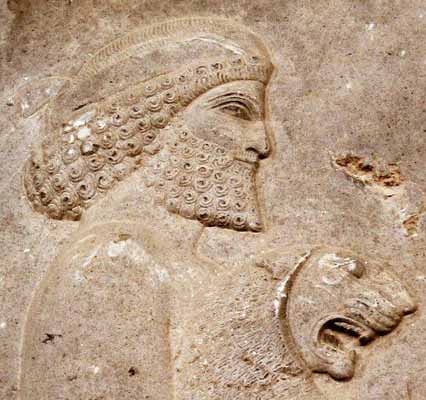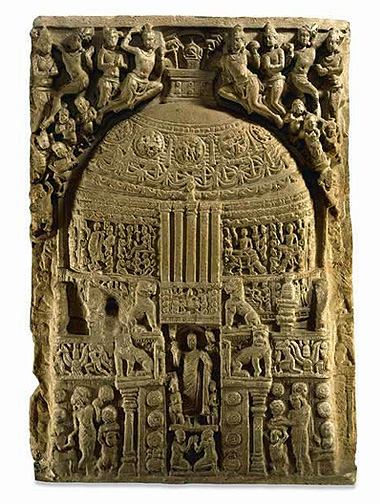For most Western historians (and also Indians), only the Core North India, is Indian history, society and culture. This is the history which British propagated and showed India as a defeated civilisation. Invaded, pillaged and dominated. Inferior and poor. Technologically backward. This is the history that is taught in schools and exists in popular imagery.
Despite its many fallacies, this view is being perpetuated by propaganda interests of the Anglo-Saxon bloc and the (various versions of) Congress party which has been the ruling party for the most of post-colonial India.
Along the Dakshinapatha दिक्षणपथ
There is another part to that history - which today influences and touches half the world. This history is full of wealth, military successes and a spread which taken India deeper than any other civilisation in the world. While the previous history was along the uttarapath, this story lies along the दिक्षणपथ dakshinapatha.
Its starts at Kerala, a highway across Nagpur Jhansi, Gwalior, Delhi Kashmir and ends in modern Iran. This history and geography is loosely dominated by the Dravidian segment of India.
Colonial historians dismissed Dravidian history as subordinate and lesser than Aryan on the basis of the Aryan Invasion Theory. Now that the Aryan Invasion /Migration Theory does not have a leg to stand on, the contribution by the Dravidians along the dakshinapatha दिक्षणपथ becomes more important.
Where It All Started
The oldest Indian language, not based on Sanskrit, is Tamil. There is 3000 year old history that Tamil language has, which makes it one the oldest, living language. Related languages are in use even today in Pakistan, where the Brahui tribe speaks a related version of the Tamil language. The Brahuis have marriage preferences which are similar to South Indians (cousins preferred in marriage) - rather than North Indians.
How did Tamil land up in Baluchistan? And thereby hangs a tale.
 The Elamites
The Elamites
The people of Elam (yes in Tamil, Eelam means homeland), were the first to civilise the Iranian Peninsula in the 2700 BC period. They were contemporaries of the Egyptians, the Mittanis and the Hittites. The Elamites were a significant people till the 800BC in Persia (modern day Iran).
The Elamites concluded a major treaty with the Akkadian King King Naram-sin (Naram to Narain and Sin is the moon goddess, Chandra; possibly Narayan Chandra). Akkadian language is itself implicated in being in cahoots with Sanskrit and Indus Valley languages - and the creation ans spread of most modern languages except Sino languages.
 The Elamites, Mittanis and Hittites ruled an area stretching from Iran to Iraq up to modern Turkey. Numerous kings have Indian names - like Shutruk (Shatrughna), Shushinak (Sheshnag - the eternal serpent on whom Vishnu rests) Siwe /Sive (Shiva-pal seems to be his name - Dravidians have a significant Shaivite following even today).
The Elamites, Mittanis and Hittites ruled an area stretching from Iran to Iraq up to modern Turkey. Numerous kings have Indian names - like Shutruk (Shatrughna), Shushinak (Sheshnag - the eternal serpent on whom Vishnu rests) Siwe /Sive (Shiva-pal seems to be his name - Dravidians have a significant Shaivite following even today).
One of the most prominent rulers of Babylon was Nebuchadnezzar (as spelt in English). Replace ‘b’ with ‘d’ and you are very close the Tamil name of Neduncheziyan (Nedunchedianuru) - a current and modern Tamil name. Interestingly, Neduncheziyan is more famous as the fabled erring Pandyan King in the Tamil classic - Silappadhikaaram. Neduncheziyan mistaken justice, brings him grief and finally death. Neduncheziyan is overshadowed by the other King, Cheran Senguttuvan’s fame in the Tamil classic, written by Jain Saint, Elangovadigal.
The goddess figurine seems to show parallel preferences between Elamite concept of female beauty and today’s Kodambakkam.
Ophir
This was a famous city from which ancient Egypt, Babylon, Sumeria and other Middle East countries imported gold, sandalwood, ivory, gems, (wild animals and birds(peacocks, monkeys). This now seems to be a corruption of the Tamil kingdom of Oviyar. Oviyar were one of the ruling tribes of South India and Sri Lanka. Ophir (as the Greeks called it and the West knows it) was a kingdom in South India and Lanka - a legend in its own time. Ships sailed from Sopara (modern Nallasoppara) and Lothal.
The Satavahanas
Immediately after the decline of Mauryan power in the Deccan, rose the Satavahanas. Based in the Godavari and Krishna river region, their origin is is disputed between being Andhras or Marathas. Many of Sakas and Yavanas were taken onto Satavahana administration. Indianised Sakas and Yavanas, (Dharmadeva, Agnivarma or Rishabhadatta) from the Central Asia-Iran-Afghan region, were tribes and peoples conquered by Alexander and subsequently available as mercenaries. The spread of Buddhism gained strength during this reign - which we will see became a significant feature of Dravidian spread. The Amravati stupa, was built during this period.
is disputed between being Andhras or Marathas. Many of Sakas and Yavanas were taken onto Satavahana administration. Indianised Sakas and Yavanas, (Dharmadeva, Agnivarma or Rishabhadatta) from the Central Asia-Iran-Afghan region, were tribes and peoples conquered by Alexander and subsequently available as mercenaries. The spread of Buddhism gained strength during this reign - which we will see became a significant feature of Dravidian spread. The Amravati stupa, was built during this period.
Satakarni I (C. 180-170 B.C) was one of the early Satavahana rulers. He expanded to western Malwa (a Sungas territory) and clashed with the powerful Kalinga ruler Kharavela. He performed performing Aswamedhas thus announcing his suzerainty - desides celebrating a Rajasuya. His queen was a Marathi princess Naganika and a Naneghat inscription describes him as ” Lord of Dakshinapatha, wielder of the unchecked wheel of Sovereignty”.
Hala (C. 19-24 A.D) the seventeenth Satavahana ruler compiled Saptasati in Prakrit, married a Sri Lankan princess, (described in Prakrit work) Lilavati. Gautamiputra Shri Yagna Satakarni (C. 78-102 A.D.), in an inscription at Nasik, took pride in calling himself `Destroyer of Shaka(Scythians), Yavana (Greeks) and Pahalava’ - Pahalava referring to the Pahlavi dynasty of Parthian area of Iran. More than 13000 coins were found from his reign - now famous as the Jogalthembi hoard.
The Chalukyas - 5th Century to 12th Century
Vijnaneshwara who accomplished renown by inscribing Mitakshara- a book on Hindu law in the court of Chalukya Vikramaditya VI. Somesvara III was a magnificent intellectual and king who amassed an encyclopedia of all arts and sciences called Manasollasa.
The Maritime Saga
So, these Indians from South were involved in Middle East administration and were a major maritime power till the 17th century. Indonesia, Philipines, Malaysia, Thailand, Cambodia were at various times ruled by these Dravidian rulers.
The world’s largest religious complex is the Hindu temple of Angkor Vat - in Cambodia.
Simultaneously, trade introduced Islam and Christianity into India in Kerala, Bengal and Kashmir - before any invasions. The demographic change in Indian religious due to invasions was magnified by colonial historians to create animosity.
More coming up in the next 1 week.
As can be seen, North and South Indians were different language and practices but saw themselves as apart of Bharatvarsha - i.e India. Unlike what European historians would like us to believe. Lot of the material is available as links in this post also.
No comments:
Post a Comment